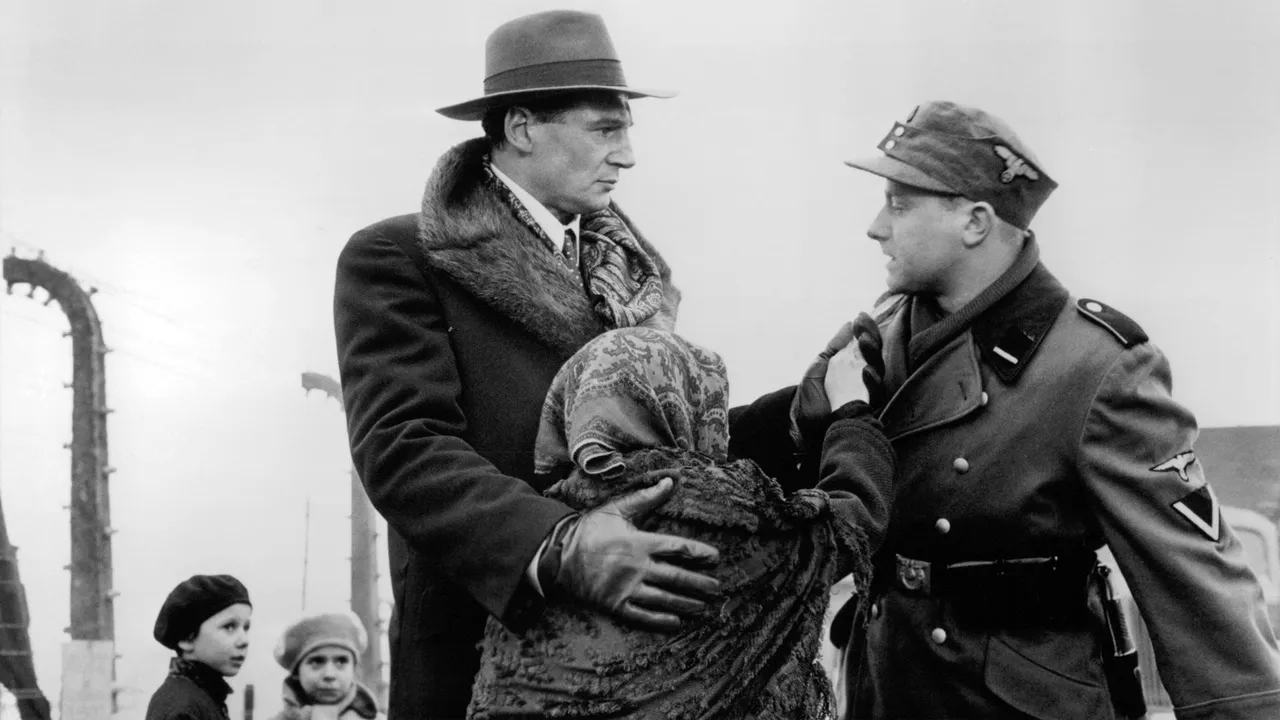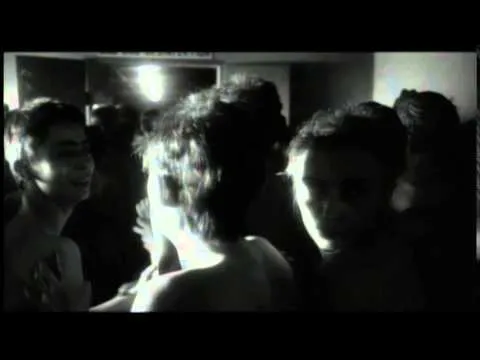
Watching the news from Kosovo, we are again reminded that human beings can sink to the lowest levels of depravity. We are also reminded of the sad fact that people in general tend not to learn anything from history, nor do they know how to apply that knowledge properly. As a result, the last decade of this sad century, with the tragic events in former Yugoslavia, Caucasus or Central Africa, looks like nothing has changed and that the mankind is again in danger to be sucked into another vicious cycle of ethnic, religious and racial hatred. The only comfort is in the fact that the intolerance never managed to reach the levels of Holocaust.
Holocaust is the word most often associated with the World War Two. It was also the word that became almost universal synonym with the worst evil imaginable. Events like the Holocaust happened before, and, sadly, it would probably happen again, but the scope, magnitude and utter irrationality of the event is something quite unique. It shocked the contemporaries, who had been used to much lower standards of human conducts than us and it still baffles historians, philosophers, psychologists and other scholars. Holocaust also inspired numerous works of art. Among those works of art, Hollywood also gave its contribution, which shouldn't surprise anyone due to the strength and influence of Jewish lobby within American motion picture industry. Schindler’s List, "Oscar"-awarded 1993 film by Steven Spielberg, may not be the best among them, but it is definitely the best known.
The film is based on the book by Thomas Keneally, which described the fascinating true story about Oskar Schindler, one of the more unusual and perhaps a little bit brighter episodes in that darkest chapter of world history. The film begins in 1939, after the conquest of Poland by German army. That country becomes anything but happy place for local Jews, who are forced to abandon their careers, property and homes and live in overcrowded ghettos, experiencing hunger, disease and utmost poverty. Their situation is an excellent opportunity for Oskar Schindler (played by Liam Neeson), small-time German businessman from Sudeten region of former Czechoslovakia. He comes to Krakow and buys local factory with the money he had borrowed by local Jews, who got raw deal in the process. He also employs local Jews as the cheapest labour force available and begins making large amounts of money. He actually doesn't run the factory - his trusted Jewish accountant Itzhak Stern (played by Ben Kingsley) is doing all the work - and instead spends all his free time drinking and womanising. But, things are about to change when the Final Solution starts showing its ugly face. When SS units, led by sadistic Amon Goeth (played by Ralph Fiennes) begin with pogroms, Schindler is at first worried about the loss of his labour force. But gradually, he begins worrying less about the money and more about people he is going to save.
Unlike most of the other stories that inspired filmmakers, story of Schindler’s List is an excellent opportunity for all those who want to have a broader perspective of the Holocaust, perspective that transcends simple formulas and simple explanations. Book by Thomas Keneally and screenplay by Steve Zaillian are evading some popular myths. First, Holocaust, although ignited by Nazism, wasn't some unexplainable aberration that came to Europe out of blue; it was a nothing more than a case of old anti-semitism driven to extreme; and it wasn't uniquely Nazi nor German. Second, as some newer examples may show, pure irrational hatred wasn't the sole motive - Holocaust was fine opportunity for many shady characters to fill their pockets. Protagonist of this film, who at beginning wants to bleed Jews dry of their money, is a fine illustration of that, often overlooked, economic aspect of the Holocaust. What happened to Jews in WW2 Europe was heinous crime, but it was also good business for those who knew to use opportunity.
Perhaps that was the greatest quality of Schindler’s List. It evades black-and-white characterisation and gives us a protagonist who is hardly example of virtue. His motives, as well as his moral alignment, gradually change through time. At first he is nothing more than war profiteer – probably the slimiest category of all people we might see during armed conflicts. But in the same time, Liam Neeson portrays him with irresistible charm - the charm of the same magnitude that saved thousands of innocent people and brightened Schindler's reputation among critical historians. As movie gradually progresses and Schindler transforms into good Samaritan, we are still left with the mystery - why did that character change. But, in the end, it didn't matter much to the people he had saved and who would always be grateful to him.
The movie doesn't have just a complex protagonist, it has similarly complex and, in a perverse way, seductive villain. Amon Goeth, played by British actor Ralph Fiennes, is in a way similar, but very different than Schindler. He is a sadistic thug, who is seduced by the enormous power given to him by the specific historical circumstances. This movie, like many other, actually tries to explain his villainy by indicating that sadistic and murderous behaviour was motivated by his ulterior weakness. For some, this might look oversimplification of Nazi psychology, but Fiennes, who gained 13 kilograms just for the purpose of this role, plays Goeth as twisted version of Schindler. Like him, Goeth is a hedonist who likes women, alcohol and money and even has certain evil charisma, but whenever we are ready to forget who are we watching, he shows again his ultimate dark side. Fiennes was really incredible in this role and even managed to outshine Neeson.
Actors were, however, outshined by director. Steven Spielberg made this film partially for personal reason, trying to finally come to grips with his own Jewish heritage. But it was also opportunity for him to improve his reputation of film artist, much tarnished with commercially successful, but artistically disappointing Jurassic Park. And that opportunity was exploited in almost every regard. Spielberg made film different from everything he had ever made and very few people would recognise his style. First of all, he used black and white photography by Janusz Kaminski, which was good choice. Most people associate Holocaust with black and white photographs, and by being monochromatic, Schindler’s List became more realistic and thus more powerful. Another thing that distinguishes Schindler’s List from previous Spielberg's work is the use of steadycam and constant movement of cameras that also provided more realism and brings viewer right in the middle of the story. Finally, unlike in all of his earlier films, Spielberg felt unrestricted with his reputation of family entertainer - Schindler’s List contains scenes of unimaginable atrocities, random violence and graphic bloodshed, as well as foul language and nudity. Considering the subject matter, such elements were necessary and many critics argued that Spielberg, by refusing to compromise on them, actually matured into real cinema artist.
Unfortunately, Spielberg might have been able to defeat self-censorship, but he wasn't able to defeat himself. There is a very small, but significant difference between very good films and true masterpieces. For almost all of its 197 minutes Schindler’s List looks like it belongs in the latter category. But at the very end, Spielberg the Artist surrenders to Spielberg the Entertainer and we are exposed to the now infamous speech by Liam Neeson, speech that revealed Spielberg as unable to resist the urge to fill this film with cheap and unecessary sentimentality. Without that speech, Schindler’s List would have been one of the greatest films of all times.
However, even with such flaw, Schindler’s List is a very good film, probably one of the best in 1990s. Perhaps it didn't stand the test of time, perhaps it won't be as immemorable as some had predicted. It also probably isn't the ultimate film of the Holocaust (Shoah was, in the humble opinion of this author better; and Benigni's Life Is Beautiful was at least equally good). It also probably did very little to educate modern generations of the historical evils (it was reported that skinheads in some German cinemas actually cheered during the scenes involving massacres of Jews), and the world probably isn't the better place because of it. But, nevertheless, it is very good piece of cinema and those who are ready to spend three hours in front of the screen would be rewarded with powerful, thought-provoking piece of seventh art.
RATING: 8/10 (+++)
(Note: The text in its original form was posted in Usenet newsgroup rec.arts.movies.reviews on June 29th 1999)
==
Blog in Croatian https://draxblog.com
Blog in English https://draxreview.wordpress.com/
Cent profile https://beta.cent.co/@drax
Minds profile https://www.minds.com/drax_rp_nc
Brave browser: https://brave.com/dra011
BTC donations: 1EWxiMiP6iiG9rger3NuUSd6HByaxQWafG
ETH donations: 0xB305F144323b99e6f8b1d66f5D7DE78B498C32A7

